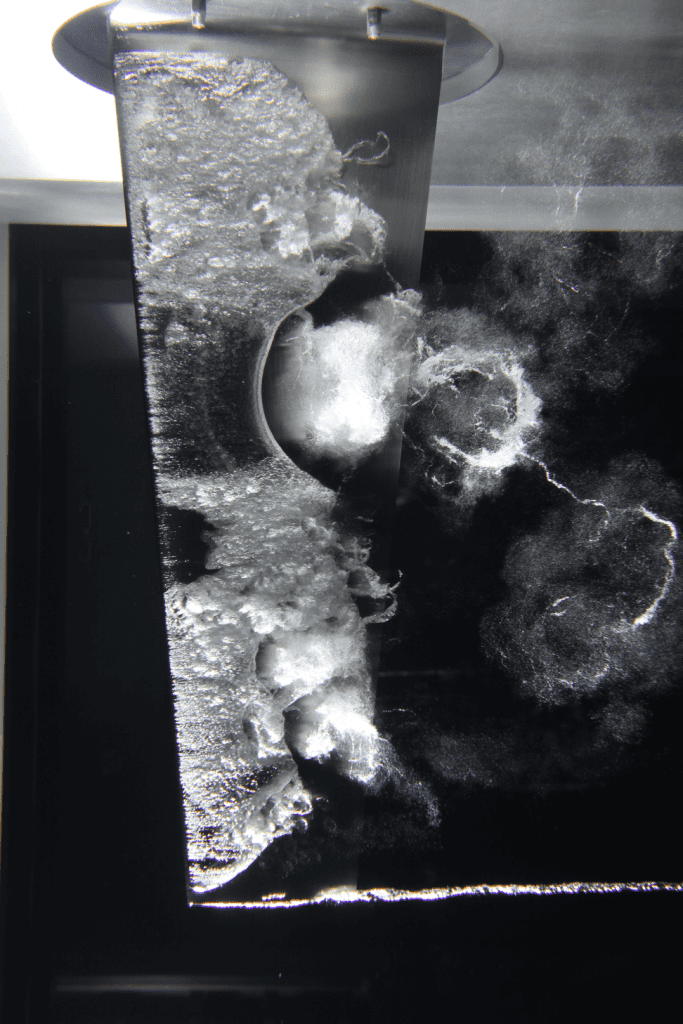The chaos, violence and beauty of cavitation
When fluid flows around an object at high speed, like water around a ship’s propeller, it may form bubbles like water boiling. This phenomenon is called cavitation. Instead of temperature increase causing the water to boil, a reduction in pressure causes the bubbling in cavitation. The process is violent and chaotic. Bubbles form and collapse with enough power to erode metal. The violent formation and collapse of vapour bubbles also create a lot of noise. This is a serious problem for vessels that require low noise levels for their survival.

Associate Professor Paul Brandner of the Australian Maritime College is the leader of an experimental group studying fluid mechanics and naval hydrodynamics. He and his team are working with the defence industry on acoustic signature reduction of naval vessels.
“The objective of our current research is to determine how to make ships and submarines as quiet as possible,” said Associate Professor Brandner.
Associate Professor Brandner and his team are currently partnered with the Australian Government’s Defence Science and Technology Organisation, the US Office of Naval Research and the Technical Research and Development Institute of the Japanese Ministry of Defence.
“Our facilities are some of the most advanced internationally for their size and the type of work that we are doing,” he said.
They are also using the $10 million facility to explore how structures respond to extreme flows, in particular turbulence and its effect on structural vibrations.
“Turbulence and cavitation around vessels create highly transient loads that cause structural vibration that are another source of noise,” he said.
The applications for understanding the phenomenon of cavitation are broad. Cavitation occurs in liquid flows in fuel injectors in cars, ships, aircraft, hydroelectric turbines and rocket fuel pumps. It also occurs in biological and natural processes.
“The snapping shrimp and mantis shrimp use cavitation to capture their prey, and cavitation actually occurs in trees!” said Associate Professor Brandner.
“Many of the physical processes involved with cavitation are common with other phenomena, such as the nucleation and gaseous diffusion forming tiny bubbles within a glass of champagne or soft drink, or breaking waves in the ocean forming bubbles that promote dissolution of atmospheric (greenhouse) gases.”
What drives Associate Professor Brandner is sheer enjoyment of his work.

-683x1024.png)
“Cavitation is captivating. It is beautiful and interesting. It is also chaotic. There is so much we don’t understand, and every time you think you’ve solved a problem, there is something new.
“Cavitation problems also require a multidisciplinary approach, so I work with a diverse range of interesting people from other specialised fields, which I really enjoy,” he said.
The next focus of Associate Professor Brandner’s research is the nucleation mechanisms of cavitation.
“We’d like to understand how cavitation starts, what the nucleation mechanisms are.”
The knowledge uncovered by Associate Professor Brandner and his team is used by modelling experts to develop computational tools to predict fluid flow as accurately as possible.